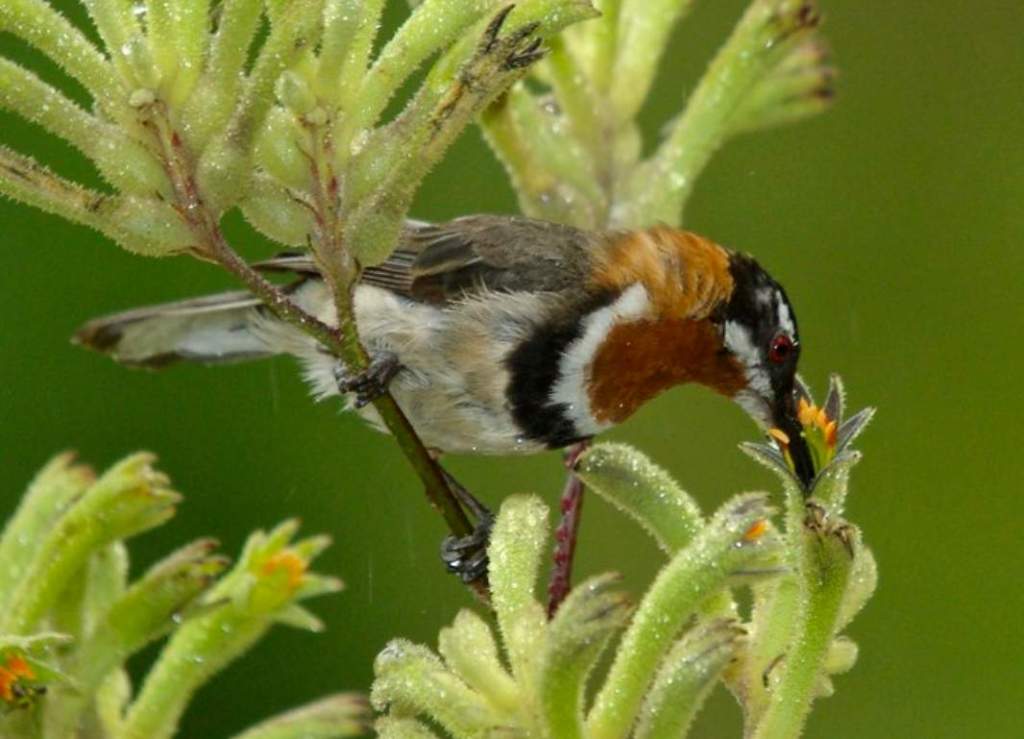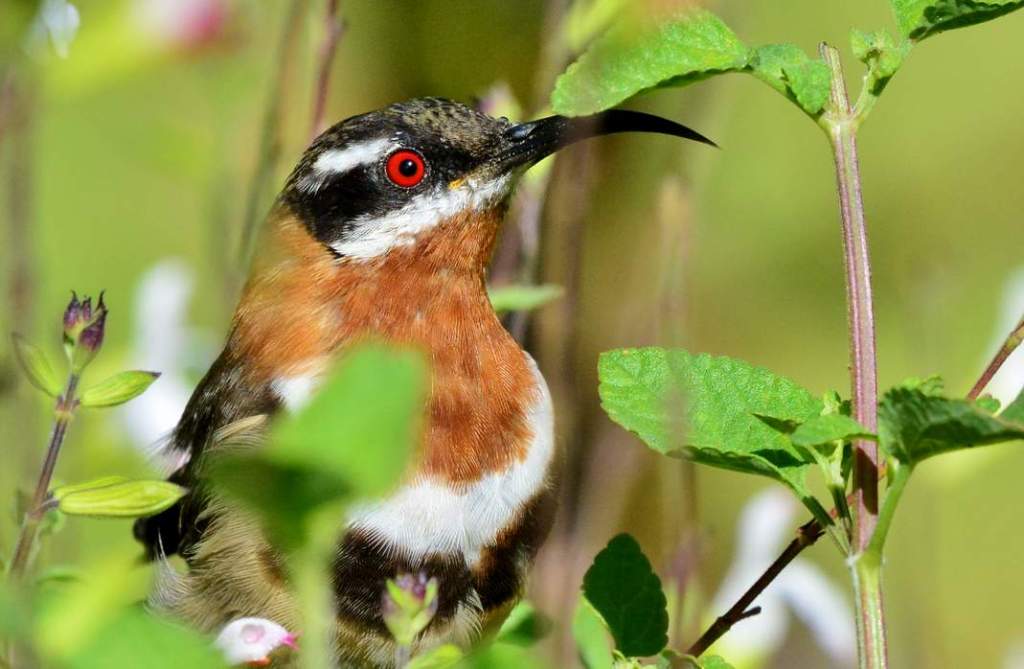Western Spinebill (Acanthorhynchus superciliosus) replace Eastern Spinebill (Acanthorhynchus tenuirostris) in southwestern Australia’s scrubby woodlands and heathlands. The bill is shorter than the Eastern’s but still has a tubular tongue for soaking up nectar. It belongs to the honeyeater family Meliphagidae. Western Spinebills measure 140-150 mm long, have a 25 mm bill, and weigh between 10 and 12 grams.

It often takes insects from shrubbery and catches them in short sallies, but nectar is its staple food. It is common to see birds visiting flowers as they bloom-dryandras, banksias, myrtles, and proteads, including kangaroo paws, and Anigozanthos. The spinebills become covered with pollen when they sidle up stems or hover to probe into the flowers of kangaroo paws. Pollination is affected by the stigma brushing against the back of the flower during the next flower spray. During certain seasons, some shrubs are always in bloom, so birds are rarely forced to migrate far. Their tails flirt and flash their white tips as they hop and flutter around in zigzag undulations from one shrub to another.

There is a loud metallic kleet-kleet call. There are fluted metallic whistles and twitterings in the song. A breeding male will hold a small territory and mark it with song flights, fluttering up near vertically for about 10 meters, tweeting, and diving to cover. Incubation of the eggs is performed by the female with little or no assistance from her partner; both parents feed their chicks.
The male has a broad rufous collar, with a dusky crown and sides of his face; the back is olive-grey, with a greyer rump and wings. The tail is grey-black, with broad white tips on the outer feathers. The hind eyebrow is white and the malar line is long and white. White and black bands cover the breast from the chin to the upper breast; the rest of the underparts are pale buff-grey. A crimson eye. Black feet and bill. The female bird has a plain brown-grey coloration above, a rufous collar and a grey, white-tipped tail; dull white hind eyebrows; and a creamy buff coloration below. It is a little duller in the immature.

During September and January, nesting and breeding take place. Nest of bark fibers, fine stems, and binding cobweb, lined with fiber and Banksia fur, supported by an upright fork in a low bush. Fledglings are continued to be fed by both parents after they leave the nest for a while. There are one or two eggs laid by Western Spinebills; pink-white, spotted and blotched brown and red-brown mostly at the largest end; oval, about 18 x 13 mm in size. Females are primarily responsible for incubation.
Western Spinebills can be found in heath and shrubby woodlands on the Southwestern mainland from Jurien Bay to Israelite Bay. Nomadism is known to be a characteristic of the western spinebill. Races do not exist.
Read More – Hall’s Babbler (Pomatostomus halli)







